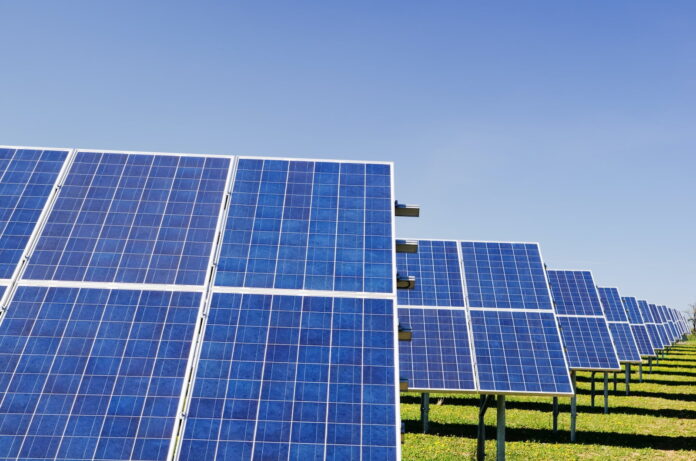The quest for sustainable energy solutions has led to a significant expansion of solar farms across the globe. As society seeks to reduce its reliance on fossil fuels, the sun’s endless energy offers a tantalizing alternative. However, the environmental implications of large-scale solar installations are complex and multifaceted. While solar farms represent a clean energy source, they also come with an ecological footprint that demands attention.
Harnessing the Sun: Solar Farms Expand
The expansion of solar farms is a testament to the world’s accelerating shift towards renewable energy. Covering vast tracts of land, these solar arrays capture the sun’s rays and convert them into electricity, contributing to the reduction of greenhouse gas emissions. The technology behind solar panels has advanced significantly, increasing their efficiency and making solar energy more accessible and cost-effective. As a result, governments and private entities alike are investing heavily in solar projects, which are becoming an increasingly common sight in both rural and urban landscapes.
The growth of solar farms is not just limited to developed countries; emerging economies are also embracing solar energy as a way to meet their growing energy needs while addressing climate change concerns. In some regions, solar farms are integrated with agricultural practices, a concept known as agrivoltaics, which allows for dual land use and can lead to increased productivity. However, the rapid expansion of solar farms raises questions about land use priorities and the long-term sustainability of large-scale solar infrastructure.
Despite the environmental benefits associated with clean energy production, solar farms are not without their critics. Some argue that the land used for solar arrays could be better utilized for conservation or agriculture. Others point out the potential for habitat loss and disruption of local ecosystems. As the number of solar farms continues to grow, it becomes increasingly important to understand their ecological footprint and to develop strategies that minimize their impact on the natural world.
The Ecological Footprint of Solar Arrays
Solar farms, while beneficial for their renewable energy production, do have an ecological footprint to consider. The construction and maintenance of solar arrays require significant land alteration, which can lead to habitat loss for local wildlife and changes in land use patterns. The clearing of vegetation for solar panel installation can disrupt soil integrity and lead to increased erosion and sedimentation in nearby waterways. Additionally, the reflective surfaces of solar panels can affect local microclimates by altering temperature and light conditions, potentially impacting both flora and fauna.
Another concern is the potential for solar farms to act as ecological traps. Birds and insects may mistake the shiny surfaces of solar panels for bodies of water, leading to collisions and mortality. This phenomenon, known as the “lake effect,” has prompted researchers to study the impact of solar farms on avian populations. Furthermore, the end-of-life disposal of solar panels presents an environmental challenge due to the hazardous materials they contain, which if not properly managed, can contaminate ecosystems.
The footprint of solar farms extends beyond the immediate environmental effects. The production of photovoltaic cells often involves the use of toxic chemicals and significant water resources, raising concerns about the lifecycle impact of solar technology. The transportation of materials and construction of solar farms also contribute to carbon emissions, albeit to a lesser extent than the ongoing emissions from fossil fuel power generation. As the scale of solar energy infrastructure continues to increase, it is crucial to address these ecological considerations to ensure that the shift to renewable energy does not come at the expense of environmental health.
Mitigating Impact: Coexistence Strategies
Recognizing the ecological footprint of solar farms, various coexistence strategies are being developed and implemented to mitigate their impact on nature. One approach is the careful siting of solar arrays, avoiding ecologically sensitive areas and prioritizing degraded lands or brownfields that are otherwise unsuitable for wildlife or agriculture. By retrofitting existing developed areas with solar panels – such as on rooftops, parking lots, and alongside highways – there is less need to disturb natural habitats.
In addition, design innovations are aimed at making solar farms more wildlife-friendly. These include using pollinator-friendly plants beneath and around panels to provide habitat for bees and butterflies, and designing panel arrays that allow for the passage of larger animals. Fencing and other protective measures can be installed to reduce the likelihood of animals interacting with potentially harmful equipment. Furthermore, ongoing research into panel coatings that minimize reflectivity could help reduce the lake effect and its associated risks to birds.
Another strategy involves the dual use of land, where solar farms coexist with agricultural practices or conservation efforts. For example, sheep and other grazing animals can be raised on solar farms, keeping vegetation at bay while providing a secondary revenue stream. Similarly, some solar installations are designed to include buffer zones that serve as wildlife corridors or protected habitats. As the industry evolves, it is becoming increasingly important to adopt a holistic approach to energy production, one that not only considers the energy yield but also the long-term health and diversity of local ecosystems.
The expansion of solar farms is a crucial element in the global transition to renewable energy, but it comes with a responsibility to balance energy production with ecological integrity. While the ecological footprint of solar arrays is an ongoing concern, it is clear that with thoughtful planning and innovative coexistence strategies, the impact on nature can be mitigated. By prioritizing the dual use of land, designing installations that minimize disruptions to wildlife, and carefully managing the lifecycle of solar technology, we can work towards an equilibrium where solar farms contribute positively to both our energy grid and the natural environment. The balancing act between solar energy expansion and ecological preservation is delicate, but with concerted efforts, it is possible to achieve a future where the sun’s power sustains not just our energy needs but also the health of our planet.
